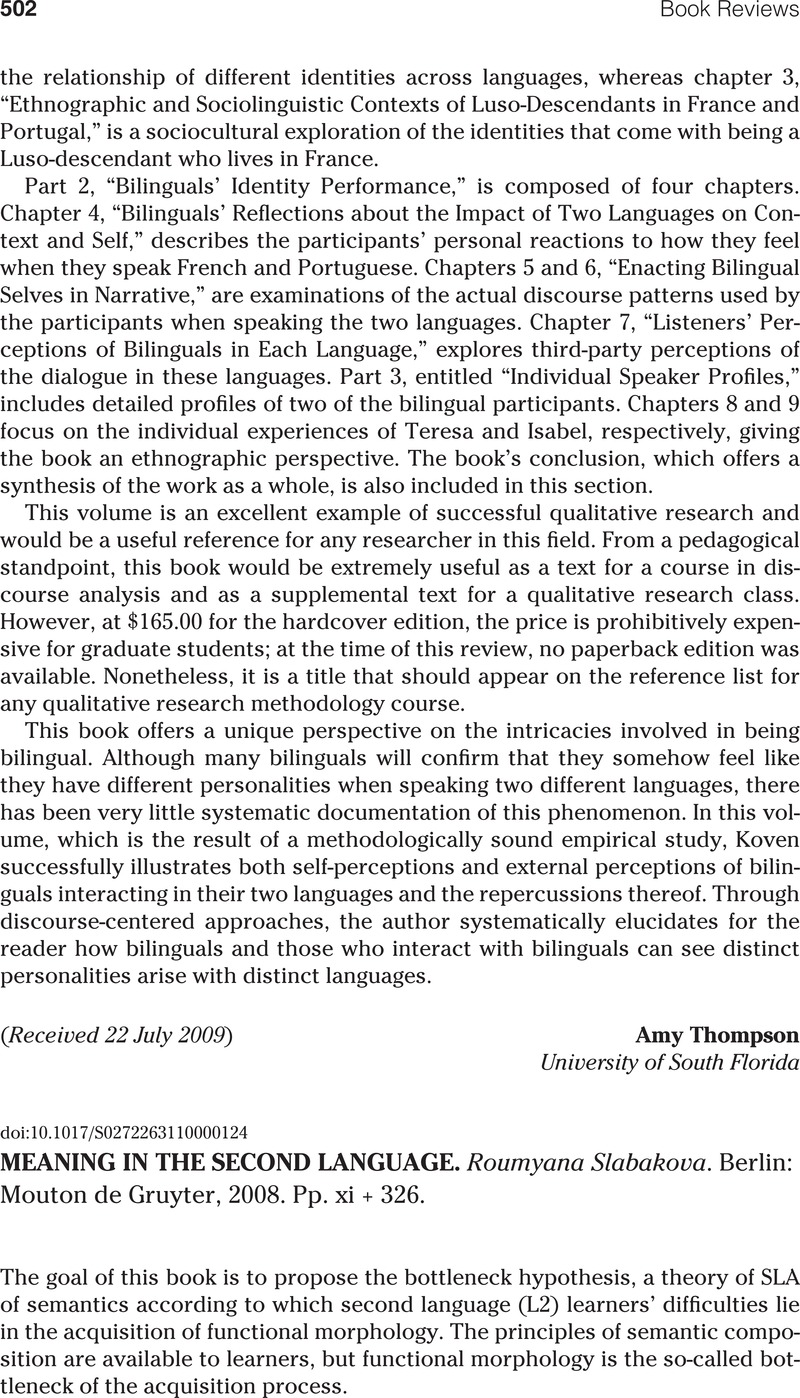Crossref Citations
This article has been cited by the following publications. This list is generated based on data provided by Crossref.
Iverson, Michael
and
Rothman, Jason
2015.
The Acquisition of Spanish in Understudied Language Pairings.
Vol. 3,
Issue. ,
p.
255.
Sánchez, Liliana
2015.
The Acquisition of Spanish in Understudied Language Pairings.
Vol. 3,
Issue. ,
p.
21.



